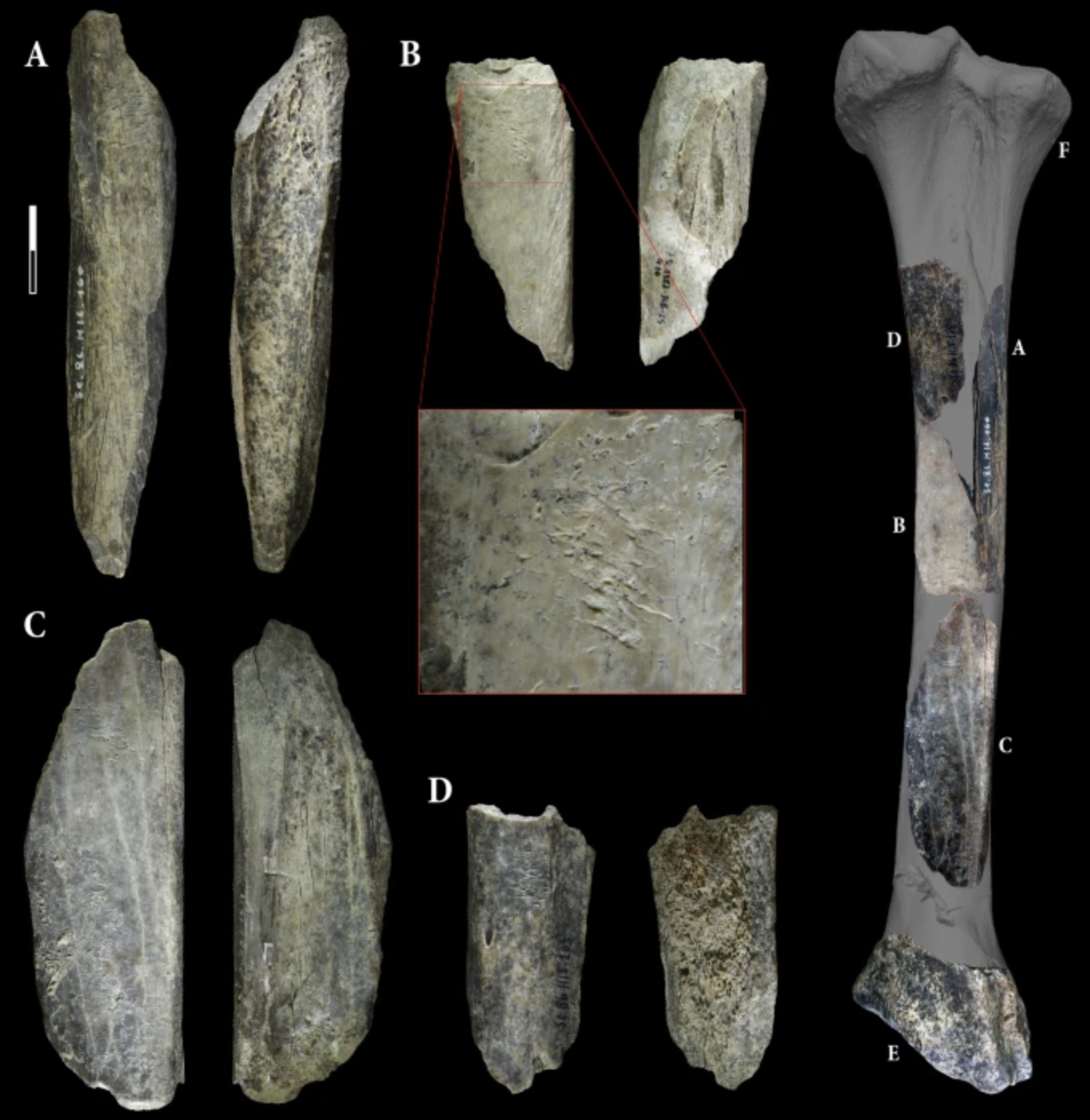Neanderthals Used Cave Lion Bones as Tools 130,000 Years Ago!
A remarkable find in Belgium’s Scladina Cave has shed new light on the intelligence and adaptability of Neanderthals. Archaeologists have unearthed what are now the oldest known multi-purpose tools made from the bones of a cave lion, tools that date back around 130,000 years.
This discovery centres around the tibia of an adult Panthera spelaea (the now-extinct cave lion), which was ingeniously transformed by Neanderthals into a set of versatile tools, something akin to a prehistoric Swiss Army knife. The bone was found to have been carefully shaped, broken, reused, and refined for different tasks, showing clear signs of intentional design and practical repurposing.
Researchers identified four separate tools that had all been crafted from the same lion limb. Initially, these fragments were shaped for specific functions, then later reused to sharpen stone tools, a process known as retouching. One of the fragments even features a bevelled end, hinting at multiple possible uses over time.
What makes this especially significant is that it’s the first time archaeologists have found direct evidence of cave lion bones being used as tools. While some sites, such as Gran Dolina in Spain, indicate early humans may have hunted lions as far back as 300,000 years ago, actual evidence of them turning lion bones into tools has been practically non-existent until now.
According to the authors of the study, published in Scientific Reports, the Scladina discovery is “an extraordinary and unparalleled finding within the Palaeolithic archaeological record.” Researchers from Ghent University analysed the bones and concluded that the Neanderthals who created them demonstrated not only technical skill but also an insightful understanding of different materials and their usefulness.
“The choice of bone wasn’t about which species it came from, it was about practicality,” the researchers explained. This suggests that Neanderthals selected bones based on their physical properties, not symbolic meaning or status.
Scladina Cave itself is already well known as a key site in Neanderthal archaeology. Past discoveries there include a remarkably well-preserved skeleton of a Neanderthal child, thousands of flint tools, and numerous animal remains. This latest find adds another layer to our growing understanding of Neanderthal life, challenging outdated views that painted them as less sophisticated or intelligent than modern humans.
As the researchers put it: “The transformation of lion bones into functional tools highlights Neanderthals’ cognitive skills, adaptability, and their capacity to make use of available resources beyond mere survival.”
Further analysis of the tools, using techniques such as energy-dispersive X-ray (EDX) spectroscopy, continues to uncover more about how Neanderthals worked with bone, with signs pointing to a repeated and structured process (known as chaîne opératoire) in shaping tools from both lion and bear bones. This strongly supports the idea that Neanderthals may have hunted animals not just for food or clothing, but also for the practical utility of their skeletons.
As studies progress, archaeologists hope to learn more about how widespread this practice was and how it evolved. For now, though, this extraordinary find at Scladina Cave paints an increasingly vivid picture of a species far more innovative and resourceful than once thought.

